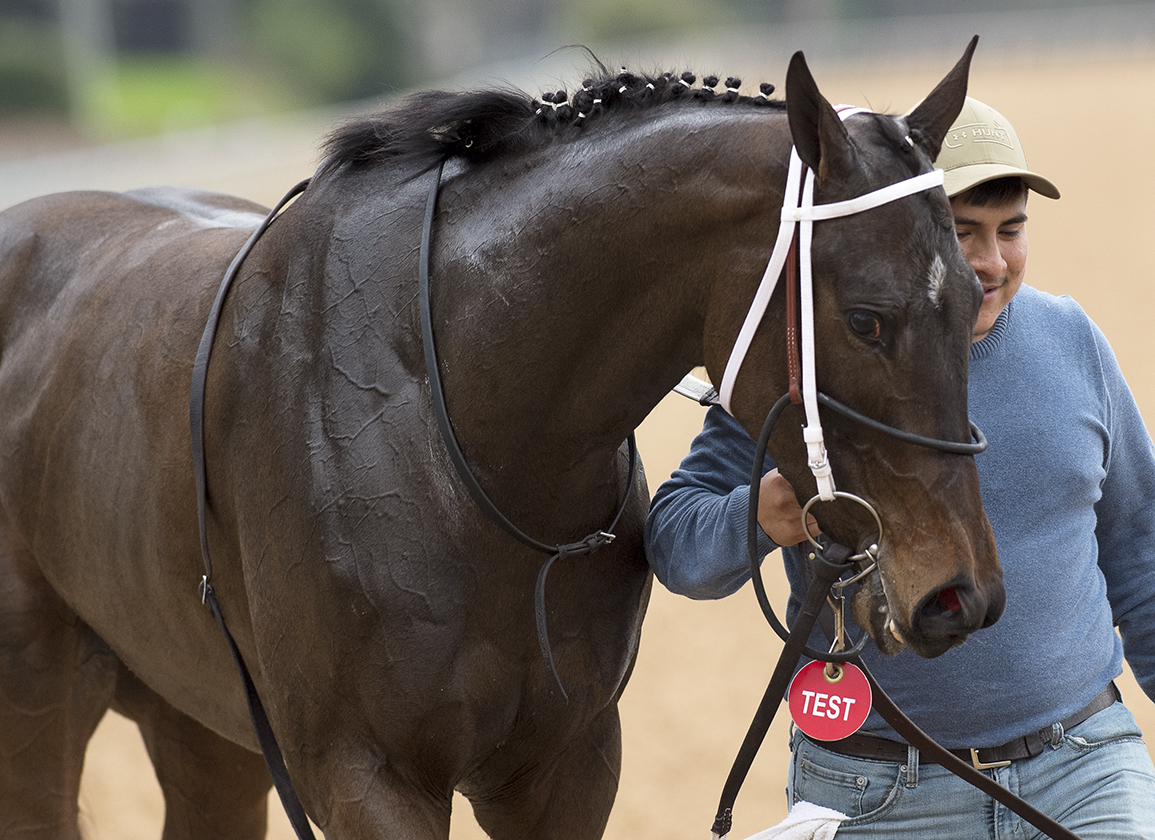By Dan Ross
Part One of a Two-Part Series
If the letter of the law is any reliable prognosticator, this time next year the United States horse racing industry will already be nearly a month into what promises to be a major realignment of the planets.
With the official enactment of the Horseracing Integrity and Safety Act (HISA) on the first of July, 2022, racing jurisdictions North and South, East and West will be bound by the same medication standards, safety rules, and enforcement mechanisms–a hallelujah for many who have long championed the ouster of l'ancien regime to pave the way for national uniformity.
But with slightly more than 11 months between now and then–provided in the interim HISA successfully navigates constitutional challenges in the courts–what do we know about how this brave new world will play out on a practical level?
The TDN reached out to Charles Scheeler, chair of the HISA board of directors, and interim executive director Hank Zeitlin, as well as several individuals listed on HISA's two standing committees to discuss the practicalities of implementation. Each said that they were unable to comment publicly at present while they essentially continue to carve out the pieces of the puzzle.
U.S. Anti-Doping Agency (USADA) chief executive officer Travis Tygart was also unable to speak in person within time of the story going to print, but the agency provided answers via email.
Those familiar with some of the backroom negotiations stressed fluidity. According to USADA spokesperson Adam Woullard, the agency is “humbled and excited” to be part of racing's new governing program. “We just have to get all the details in place,” he wrote.
“This is a moving target,” says Alex Waldrop, president and CEO of the National Thoroughbred Racing Association (NTRA), who pointed out that Scheeler only officially assumed the HISA board chairmanship at the end of May. “Nothing's set in stone yet.”
Nevertheless, among many individual state regulators and other stakeholders around the country, there appears to be no small worry that in the relatively short amount of remaining time to nail down the law's working mechanics, a concerning lack of specificity has to date been made publicly available.
“You can make assumptions, you can make guesses,” says Alan Foreman, chairman and CEO of the Thoroughbred Horsemen's Association (THA). But among the industry stakeholders at large, he adds, “nobody really knows.”
Deadlines
Wielding ultimate fiefdom over the law is the Federal Trade Commission (FTC), whose official everyday remit is to “protect consumers and promote competition.”
But practically speaking, the bulk of the work within the Horseracing Integrity and Safety Authority–the broad non-profit umbrella established by the law and commonly referred to as just the “Authority”–will be done within four main bodies.
There's the nine-member board of directors, which provides an overall governing arm to the program.
Two standing committees–the Anti-Doping and Medication Control Standing Committee and the Racetrack Safety Standing Committee–are charged with helping to establish and maintain the uniform standards within their respective arenas.
Then there's the anti-doping enforcement authority, broadly responsible for implementing and enforcing the medication control and the racetrack safety programs. It's widely believed the USADA will fill that position, though that contract hasn't yet been officially inked.
Right now, those in charge of piecing HISA together are in the rule-making process.
This necessitates the standing committees to work toward baseline rules in their respective fields, which they will then submit to the board of directors for approval. The board will then, in turn, file the proposed rules with the FTC for review, for sending out for public notice and comment, and then for promulgation.
There are some hard deadlines baked into the law. In the initial stages of implementation, for example, baseline uniform medication standards, laboratory testing accreditation rules, and racetrack safety accreditation standards will have to be put out for public comment–an as-yet undetermined amount of time.
The FTC then has 60 days from publication in the federal register to approve a proposed rule or modification.
Crucially for this initial stage, the public comment period and FTC approval needs to be completed in time for the Authority to publicly issue the new rules on or around Mar. 1 next year.
For all intents and purposes, therefore, the Authority has little more than five months to draft its initial uniform rules, says Bill Lear, vice chairman of The Jockey Club (TJC) and someone who has been instrumental in getting the legislation passed.
“I would write a big black line at the end of the year,” he says. “Most of the draft rules need to be to the FTC by the end of 2021.”
And so how far along are the committees in drafting these rules?
Current Progress
The answer is difficult to gauge, given the lack of available information.
According to several people familiar with the process, the board of directors and the racetrack safety standing committee members have conducted multiple meetings.
The committee responsible for helping to establish a baseline set of medication standards met in full for the first time only recently, on July 22.
Around the middle of July, Scheeler, Zeitlin, and Tygart addressed members of the Association of Racing Commissioners International (ARCI), giving attendees the chance to ask questions.
According to Mike Hopkins, executive director of the Maryland Racing Commission, the meeting was a useful primer, but answered little in the way of specifics.
“We've talked, but it's been very broad,” he says, adding that he and his fellow commissioners were told that “they're working on the program, and it'll be ready in early fall.”
When it comes to lingering questions about the practical implementation of HISA, there appears this main through-line: How many of the everyday responsibilities will be left to individual states and their existing regulatory infrastructures?
In that regard, the law appears to leave a fair amount of wriggle room.
It states that the Authority can delegate to a state racing commission components of the racetrack safety and anti-doping and medication control programs, “if the Authority determines that the State racing commission has the ability to implement such component in accordance with the rules, standards, and requirements” that are already established.
According to California Horse Racing Board (CHRB) executive director, Scott Chaney, given the logistical enormity of the proposed regime change, he expects things to look like “business as usual given the strict nature of our current regulations” in California, at least during the initial execution of HISA.
Nevertheless, “I think it's fair to say I have concerns,” he says. “The devil now is in the details. And by details, I mean implementation.”
Medication Standards
From the outside looking in, the easiest issue in terms of wrangling uniformity appears to be the establishment of baseline medication standards, with the law's target aim of largely prohibiting the administration of a substance to a horse “within 48 hours of its next racing start.”
When it comes to which laboratories will be used, the law extends “provisional or interim accreditation” to a laboratory with Racing Medication and Testing Consortium (RMTC) accreditation.
“It isn't clear at this point, but we wouldn't be surprised if the Authority uses this provisional or interim accreditation at least at the beginning,” wrote Sarah Reeves, attorney with the firm Stoll Keenon Ogden and someone who has worked extensively on building HISA's legal architecture, in an email.
Nine laboratories currently employed within the industry already have that accreditation.
That said, at the granular level during this process, those responsible for drafting the new rules will have to grapple with all manner of technical headaches.
The Authority is encouraged to use as a template the International Federation of Horseracing Authorities' (IFHA) lists of permitted and banned substances–including drugs, medications, and naturally occurring substances and synthetically occurring substances–along the IFHA's screening limits for urine and blood.
It's also encouraged to seek guidance from the World Anti-Doping Agency (WADA)'s “International Standard” for laboratories, and the ARCI's out-of-competition testing standards.
When it comes to drug classifications, the law singles out the ARCI's model rules for penalty and multiple medication violations.
One of the primary differences between the current system and the one being drafted is that the IFHAs list of controlled therapeutic substances uses screening limits for blood and urine, whereas in the States, thresholds for blood are the primary benchmarks of choice.
What's the difference?
Screening Limits vs. Thresholds
A threshold is a specified value that regulatory authorities have decided, through rigorous scientific process, is an appropriate level of a certain substance permitted in a horse's system to compete.
Unlike a threshold, a screening limit is a trigger to proceed with further analysis of a sample–indeed, laboratories will often use screening limits when testing for drugs that have established thresholds.
As the RMTC puts it, a screening limit is “a point below which a sample is declared negative and above which a sample is declared 'suspect' or 'presumptive positive.'”
If a post-race sample contains an amount of a regulated substance below the IFHA's screening limit, therefore, that sample is clear.
The various experts TDN consulted for this story explained that there's already significant harmony between the IFHA's control list of therapeutic substances and that largely used in the U.S. “For California, I don't think it's going to be that big of a change,” says Dr. Rick Arthur, recently retired CHRB chief medical officer, adding however that “there will be differences.”
For one, some of the drugs on the IFHA's control list of therapeutic substances don't have U.S. Food and Drug Administration (FDA) approval for use in the U.S., and vice versa.
The Authority, therefore, will have to establish screening limits for the substances routinely used in the U.S. that aren't on the IFHA's control list if it doesn't want a hybrid model of screening limits and thresholds.
But experts warn that time is fast running out to establish screening limits for some of the U.S.-centric substances, especially if they're going to withstand legal challenges in the event of a disputed medication positive–a likely scenario, given the industry's litigious proclivities.
“We can go to screening limits, but there's a lot of work we're going to have to do to be prepared to defend those in court,” says one expert, familiar with the process, who asked to remain anonymous.
To emphasize the legal imperative for a watertight set of screening limits, the expert pointed to the manner in which medication violations are handled by private entities in other prominent jurisdictions–like England's racing industry, governed by the British Horseracing Authority (BHA)–in contrast to HISA's federal framework.
USADA's Woullard didn't specifically address the question of whether the agency was anticipating a hybrid model of thresholds and screening limits. He did, however, point to other jurisdictions and organizations for potential plugs in the data gaps.
“For example, Racing Australia published screening limits for certain therapeutic substances, not all of which are included by the IFHA. Likewise, the EHSLC [European Horserace Scientific Liaison Committee] publish detection times,” Woullard wrote.
The creation of additional guidance on substances, “whether in the form of withdrawal or detection times,” would come through “scientific discovery” and research, Woullard wrote, adding that “we have not commenced a research program yet.”
The law strictly prohibits individual states from enacting medication standards that are less restrictive than the federal rules. But what happens if a state wants to implement a standard that's more stringent?
For example, California doesn't authorize any level of clenbuterol in a post-race sample, whereas the IFHA's screening limit for clenbuterol is 0.1 nanograms per millilitre in urine.
According to Lear, the language in the law rigidly prohibits individual states from enacting medication standards that differ from the Authority's, even if they're stricter. “It would not be allowed–it would be pre-empted by HISA under the language of the act,” he says.
Ultimately, explained USADA spokesperson Woullard, “the goal is to create a uniform set of rules across the sport that prioritized the health and safety of equine athletes, which is consistent with our human programs.”
Coming up tomorrow: All these points could be moot if the two legal challenges to HISA prevail. What are their chances? And who will pay for HISA? Read about that, along with welfare and safety, and the first public airing of the details, in part two in Monday's TDN.
Not a subscriber? Click here to sign up for the daily PDF or alerts.











